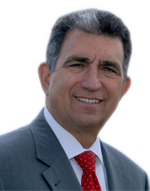Assemblyman Bill Magnarelli: Governor’s Budget Cuts Choke New York’s Health Care System
We should make it easier, not harder, for New York’s most vulnerable families to get medical help. But after 12 years and 12 budgets, the governor has learned little about revamping our health care system to improve access to affordable health care.
He has repeatedly proposed cuts in health care and increases in the sick tax on hospitals and nursing homes, making it difficult for them to do their jobs. This year is no different. He wants to extend the 6 percent sick tax on nursing homes and that will make it difficult to deliver quality care for the elderly.
Cuts jeopardize Medicaid, EPIC
The governor’s budget proposes a massive $1.3 billion ($907.1 million in state funds) cut to a health system that is already struggling, and could lead to a loss of an estimated 29,700 jobs.
The federal Medicare Part D prescription program is a mess. We have senior citizens in Central New York and throughout the state struggling to pay for prescription drugs, while trying to figure out how to sign up for the right Part D plan. In the scramble, many may lose coverage. That’s already the case with the thousands on Medicaid whose transfer to Part D was supposed to be automatic, but administrative bungling left them unable to pay for medicine. The Assembly bill to fix this mess and provide the needed prescription coverage passed the Legislature and now waits for the governor to act (A.9462).
The governor puts prescription drug coverage on the back burner. Instead of throwing a lifeline to those who can’t afford their medication, he lets them sink – pushing vulnerable seniors to give up their benefits under the Elderly Pharmaceutical Insurance Coverage program by attempting to cut the reimbursement rate to pharmacies. Squeezing the life out of EPIC hurts the families it’s supposed to help.
The governor’s health care cuts will mean increased co-payments, cuts in eligibility and reduced benefits for an extremely precarious low-income population. The governor even fails to ask the federal government to give New York its fair share of Medicaid funding, when just a 1 percent increase would provide over $450 million in state and local savings.
The governor also wants to undercut Family Health Plus, a public health insurance program for low-income adults, by increasing the emergency room co-pay for its enrollees from $3 to $25 for non-emergency visits.
Prescription savings hard to find
The governor has also turned his back in helping families find the best drug prices by repealing a law he signed five months ago to post prescription drug prices on the Web (Ch. 293 of 2005). The law, which passed unanimously in both houses, requires the state to create a Web site where consumers can compare prices of the most commonly prescribed drugs at every pharmacy in the state, making it easier for New Yorkers to buy drugs at the lowest cost possible.
He signed the law, then, under the budget’s “low-priority programs,” refuses to fund it. True, New York Attorney General Spitzer’s Web site offers comparison prices and Consumers Union and AARP give drug price information on their sites. But the new law would have made it much easier for families to save money and time by posting drug prices on the Internet.
Reining in Medicaid costs
Few argue that in providing medical care to those who need it, we must also look at the price, especially for Medicaid. Although last year’s agreement to reduce Medicaid costs on counties will produce some savings, the Assembly’s plan would have done even more.
The governor touts last year’s compromise on Medicaid relief as the best we could do. But the Assembly’s plan for a hard cap on Medicaid costs would have saved Onondaga County $23.9 million, instead of the $18.1 million it will save this year.
Last year’s agreement for a soft cap on Medicaid costs was a start, but we have to do more to ease the Medicaid burden for local taxpayers and I will fight for a hard cap on these costs. I am committed to reducing New York’s overwhelming tax burden, while providing our residents with affordable health care.
Conclusion
In the coming weeks as we debate the governor’s budget, I will fight to ensure health care is funded without crushing local taxpayers, putting the interests of our residents first. The Assembly will negotiate to do what’s best for New York’s working families.
